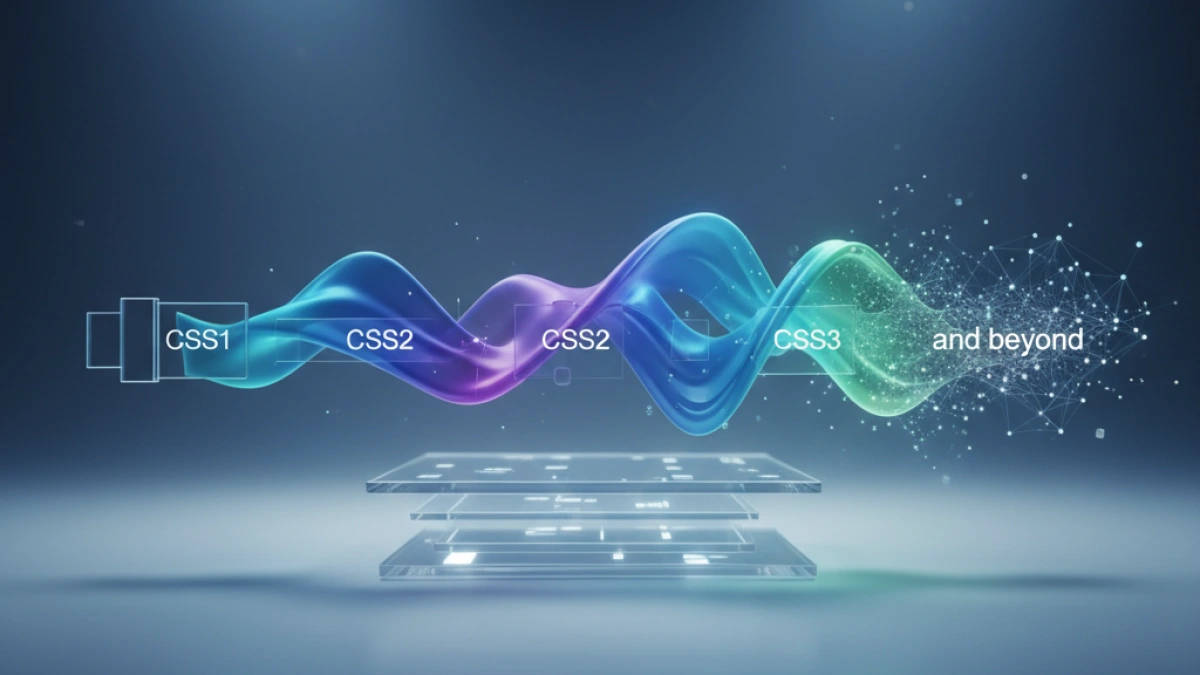The Evolution of CSS: From CSS1 to CSS3 and Beyond


Cascading Style Sheets (CSS) have been a fundamental part of web development since its inception. In this article, we will explore the evolution of CSS, from its first version (CSS1) to the latest specifications such as CSS3 and beyond. We will also analyze how these versions have impacted web design and user experience.
What is CSS?
CSS, which stands for Cascading Style Sheets, is a design language used to describe the presentation of a document written in HTML or XML. CSS allows developers and web designers to control the layout, colors, fonts, and other aspects of a website's visual presentation, thus separating content from form.
The History of CSS
CSS1: The Beginning (1996)
CSS1 was introduced by the World Wide Web Consortium (W3C) in December 1996. This first version established the foundations for how styles could be applied to HTML documents. Some key features of CSS1 include:
- Basic Selectors: Enables designers to select HTML elements to apply styles.
- Text Properties: Includes properties for text color, font, and spacing.
- Box Model: Introduces the box model, allowing designers to control the margin, padding, and border of elements.
CSS2: Expanding Possibilities (1998)
CSS2 was released in May 1998 and added many new and improved features. Among the most significant improvements were:
Read also
- Media Support: CSS2 introduced the ability to apply different styles depending on the medium where the content was viewed (screen, print, etc.).
- Positioning: Different positioning methods, such as absolute, relative, and fixed, were introduced, allowing for more flexible and dynamic layouts.
- Z-index: This property allowed designers to control the stacking order of elements on the page.
CSS2.1: Refinement and Correction (2011)
After CSS2, a corrected version known as CSS2.1 was published in June 2011. This version did not introduce significant new features but focused on clarifying and correcting errors in previous versions.
CSS3: A New Era (1999 - Present)
CSS3 began development in 1999 and has seen multiple advancements over the years. CSS3 introduced a modular approach, meaning that new features are developed in independent modules. Some of the most relevant modules of CSS3 include:
New Properties and Functions
Read also
- Advanced Selectors: CSS3 enabled a greater level of specificity in selectors, such as pseudo-classes (:nth-child, :hover, etc.).
- Flexbox and Grid: Two powerful tools for creating responsive and flexible layouts. Flexbox is ideal for one-dimensional layouts, while Grid allows for complete two-dimensional control.
- Shadows and Effects: Properties like box-shadow and text-shadow were added to create visually appealing effects.
Multimedia and Responsive Design
CSS3 also introduced features that enhanced responsive design:
- Media Queries: Allow different styles to be applied based on device characteristics, such as screen width. This has been fundamental for adaptive web design.
- Video and Audio: The ability to view and control multimedia content directly in CSS has enriched the user experience.
Beyond CSS3: The Future of CSS
CSS continues to evolve and improve. Some of the upcoming features and modules in development include:
CSS4 and Beyond
Although there is no official "CSS4," new features are being introduced that continue to expand CSS capabilities. Some areas in development include:
- Custom Properties: Also known as CSS variables, these allow developers to define reusable values across their styles.
- CSS Houdini: This is an initiative that provides developers with greater control over browser rendering, enabling more dynamic and customizable designs.
Impact on Modern Web Design
The evolution of CSS has transformed web development from the creation of static pages to the design of complex and responsive applications. Today, with the popularity of frameworks like Bootstrap and Tailwind CSS, developers can create sophisticated designs using the advanced capabilities of CSS.
Conclusion
The history of CSS is a testament to the continuous evolution of web development. From the days of CSS1, which offered basic capabilities, to the advanced features of CSS3 and beyond, the language has significantly impacted how designers and developers create web experiences. With each new iteration, CSS becomes a more powerful and versatile tool, paving the way for the future of web design.



















